Rabbits, Cutting Trees and Birds
 We’re still amazed – literally – that the New England cottontail rabbit is a candidate for listing under the Endangered Species Act. The cottontail freakin’ rabbit!
We’re still amazed – literally – that the New England cottontail rabbit is a candidate for listing under the Endangered Species Act. The cottontail freakin’ rabbit!
Okay, not the similar eastern cottontail, but still. And what’s the issue? Apparently people – including people we all know – think it’s “cruel” or “ugly” to cut trees. Freakin’ trees!
That, in turn, affects the king of all gamebirds, the ol’ furry forest chicken, and its oddball cousin, ol’ woodie. That’s in New England. It affects other gamebirds elsewhere.
Some more info, from this recent article:
Once common, the New England cottontail’s historic range has shrunk by more than 80 percent. They aren’t found anywhere in Vermont, and across the six states, they are reduced to five small populations.
The native rabbit’s difficulties in finding places to hide from predators highlight a greater problem—the landscape continues to change over to more of a planned suburban park than a combination of forest and field, the diversity of habitat needed by so many species.
The work to cut these older trees in areas of 25 and more acres will create more “early successional wildlife habitat,†meaning bushes, vines, and saplings. New England cottontails need these for food and cover, but so do at least 46 other species that are in danger because of the lack of young trees and bushes. These include wood turtles, leopard frogs, and many birds such as towhees, ruffed grouse, and woodcock.
The three states of Connecticut, Massachusetts, and New Hampshire, where more is known about the status of the New England cottontail, have each received $223,000 in grant money from the private Wildlife Management Institute to plan and plant thickets on state land. Other states received lesser sums for planning and survey work.
If there’s a silver lining here it’s that while the animal nutcase (rights) crowd – which is the same as the ultra-green, “don’t cut trees” crowd – wouldn’t lift a finger to help game species like ruff and woodie, it sure as heck will try to help soft and cuddly bunnies…which also are tasty, come to think of it.
We gotta get more trees cut. Not sure what it’ll take. Any ideas? Maybe we’ll start with bumper stickers….
More
> The rabbits and birds (including pheasants and quail) need what’s called “early successional habitat.” Talk to bird biologists and they’ll use that term. To read a short-ish article about exactly what that is, click here.
Category: CT, Forest Management, MA, ME, NH, Pheasants, Quail, Rabbits, Ruffed Grouse, VT, Woodcock





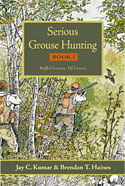


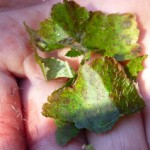

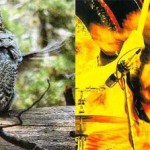
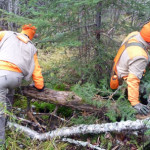

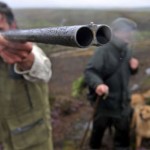


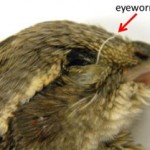

I guess I am lucky to live in Oregon, they do less logging now than in the past but it is easy to locate different stages of growth occurring. They seem to be doing a pretty good job of taking 30 acre plots or so and leaving belts and plots of varying ages & sizes adjoining. I was a bit unlucky to have what I considered 3 of my hot spots encroached by logging operations last season (not my actual cover areas but close enough the noise and activity must have made birds move out at least for now) but I guess I can be thankful that their habitat is being renewed.
The forestry department or logging companies have also been posting the plots with signs showing the year that the areas were replanted. I enjoy seeing that and hopefully the ultra-greens get the picture there is life of trees even after logging. And if they get past thinking of only old growth they would see an abundance of life moving around in the younger areas.
Emailed by a reader: What we need to do is to promote tree cutting as quality deer management. If that would catch on we would have more grouse cover than we could ever hunt in a lifetime!
I am a pro-hunting, pro-logging enviromentalist
sorry, environmentalist (Poor Spelling)
I have that bumper sticker and it is funny to think that people don’t understand it.
Responsible hunting and logging practices can not only be beneficial to the envronment, but for recreation and the economony.
Here’s another one:
SAVE THE RAIN FOREST, HARVEST AMERICAN TIMBER.
We shouldn’t be burning coal, we should be burning wood for energy, and if you think that is worse for the environment, get educated!